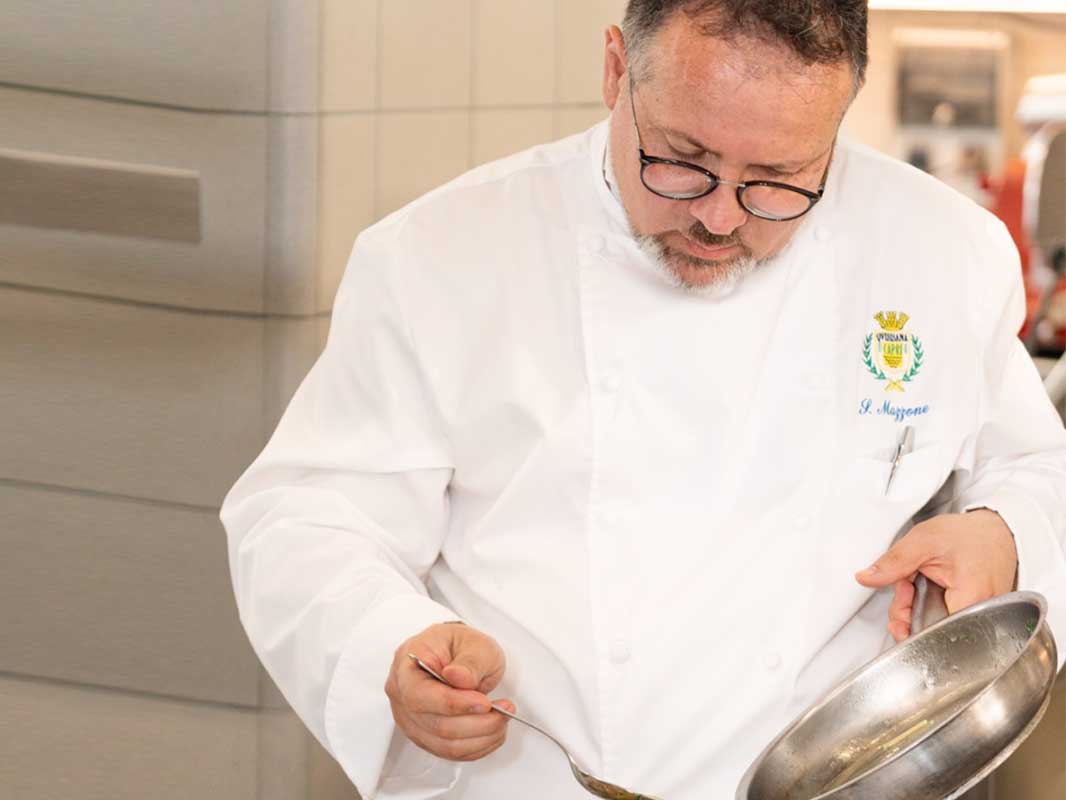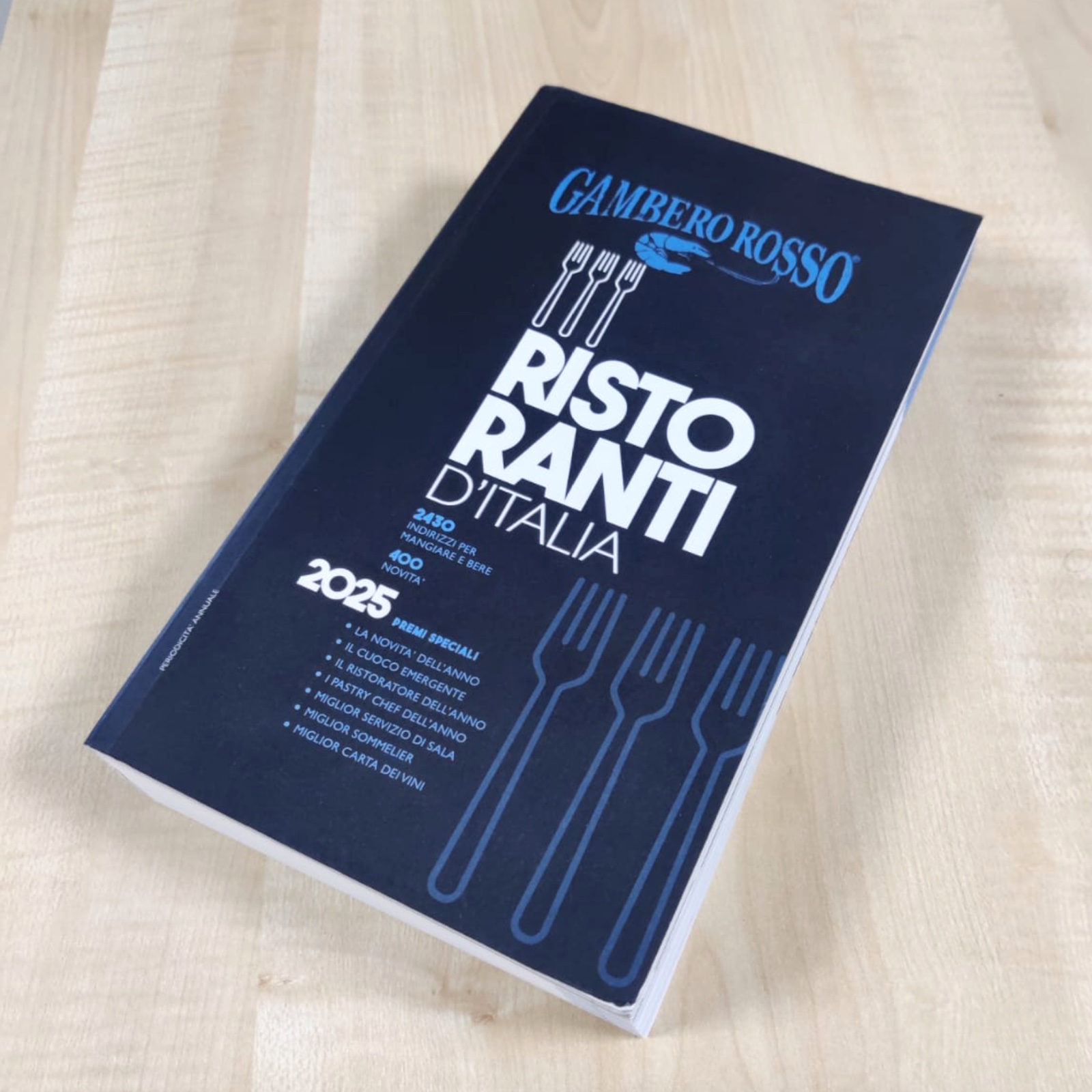
Interview with Chef Mazzone: “Each dish tells the essence of the Capri territory and the rich history of Quisisana.”
Chef Stefano Mazzone joined the kitchens of the Grand Hotel Quisisana in 2007, accepting the Morgano family’s invitation to continue their gastronomic tradition.
Immersed in the enchanting island of Capri, the Grand Hotel Quisisana stands as a testament to timeless elegance and culinary artistry. Since 2007, Chef Stefano Mazzone has been at the helm of the renowned La Colombaia Restaurant, orchestrating a symphony of flavors that weave together the essence of Capri’s seasons and the rich history of the hotel in every delightful dish. Beyond adhering to seasonality, Chef Mazzone’s cuisine stands out for its storytelling ability. Each dish is a carefully crafted narrative that intertwines the island’s rich heritage and the hotel’s historical past.
Chef Mazzone, can you tell us about the soul of your menu?
At La Colombaia, we focus primarily on the seasonality of our products and expressing our history through cuisine. Each season, during the hotel’s open period – spring, summer, and autumn – brings a rich variety of fresh ingredients and unique flavors. Our cuisine adapts accordingly, offering dishes that celebrate and enhance these seasonal products. A distinctive feature of our menu is its deep connection with the hotel’s history. Quisisana has a rich history full of fascinating anecdotes and details that reflect a deep attachment to this place. It’s a culinary thread that links past, present, and future, creating an unforgettable dining experience that goes beyond mere food.
A curiosity about history: why was the 1896 menu of the Grand Hotel Quisisana written in French?
The French language menu of 1896 at the Grand Hotel Quisisana reflected the cosmopolitan and international atmosphere of the time, as well as the influence of international standards in the culinary world of the 18th and 19th centuries. French was widely spoken and understood among the European aristocracy and elite travelers, especially in contexts like the Grand Tour – an educational and cultural journey undertaken primarily by young aristocrats that touched the cultural locales of Rome and Greece. Thus, dishes like “uovo alla monachina” and “risotto alla milanese” were written in French on menus of the era, a clear testimony to an international cuisine. The Grand Hotel Quisisana has always represented Italy to the world for its uniqueness and identity, which is not solely tied to Capri. This is a place that has always engaged with the entire world, even in the past, and many historic events of global significance attest to this.
The most recent event highlighting the international nature of the Grand Hotel was the G7. You led a large team of chefs. Can you tell us about this experience?
Certainly, it was an extraordinary and significant experience for me and the entire Quisisana team. The G7 event was a crucial moment that once again highlighted the international importance of our hotel. One of the dishes we served to the G7 ministers was “carciofo al tegame,” an icon of the local area that perfectly represents the seasonality and authenticity of our region’s products. This dish was a great success, demonstrating how important it is to value and promote the culinary excellence of the territory. Additionally, we had the opportunity to present our distinguished guests with the “Torta Cardinale 1936.” This dessert has a rich and fascinating history that dates back to a dinner held in honor of Archbishop Monsignor Serena, hosted by the mayor of Capri Marino Dusmet. It was a way to pay homage and share a piece of our culinary tradition with our guests. I have tried to be an interpreter of Quisisana, conveying its essence through the dishes we served.
Beyond the menus created throughout the various seasons, there is a culinary emblem that transcends time and evokes precious memories: risotto alla milanese.
Risotto alla milanese has a fascinating history here at the Grand Hotel Quisisana. From the earliest days I arrived, I had the pleasure of grasping the importance of this dish for the hotel. Mr. Mario, the patriarch of the owning family, occasionally asked me to prepare risotto alla milanese, and initially, I didn’t understand why. I thought it was related to the consultancy of the renowned chef Marchesi between 1995 and 1996, when he first consulted here. But over time, I realized there was something deeper. I continued to prepare risotto alla milanese regularly, at least once a month, following this ancient hotel tradition. Then, one day, a dear journalist friend sent me a menu from Quisisana that is part of the Buttolph Collection of The New York Public Library. In this menu, dated late 1800s, I discovered that risotto alla milanese was listed, along with “uovo alla monachina,” in French. Other dishes, like “parmigiana di zucchine in fiore,” “mosaico di tonno rosso,” “ravioli capresi,” and “pizza fritta,” are expressions of this territory and especially of the identity of this hotel. We have the task of telling this fantastic story, striving to understand it deeply.
Chef Mazzone, it is clear that you are not only knowledgeable about the hotel’s history but also actively engaged in preserving its heritage.
I am a great collector of antique objects related to the hotel, and over the years, I have created a small collection that has become a valuable resource for my work. It is a great honor for me to contribute to preserving and enhancing the history of Quisisana in this way. It is a place rich in history, charm, and tradition, which has withstood the test of time and continues to be a point of reference for luxury hospitality in Capri and the world. As a well-known journalist from Capri rightly said, Quisisana survives everything and everyone, regardless of the historical period in which it finds itself. This is an absolute truth that testifies to the hotel’s strength and longevity over the decades, and I am honored to contribute to its continuity and prestige.
Excellence that always values excellence
Exactly. Nestled between the fertile lands of the Vesuvian region, the “piselli dei 100 giorni” (100-day peas) testify to the rich agricultural heritage of the region. The Grand Hotel Quisisana is proud to collaborate with a cooperative of young people with disabilities, who cultivate these exceptional peas. Through their dedication to this commitment, they not only contribute to the preservation of a culinary tradition but also find renewed purpose through a strong connection with nature.



